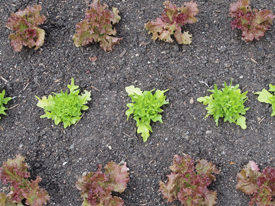 The Santa Fe Right of Way, a stretch of open space that used to be a railway line, runs through several neighborhoods in South and Central Berkeley. It’s the site of a bioremediation project that we’ve blogged about in the past, and next week we’re running a workshop there as part of our Soil in the City series.
The Santa Fe Right of Way, a stretch of open space that used to be a railway line, runs through several neighborhoods in South and Central Berkeley. It’s the site of a bioremediation project that we’ve blogged about in the past, and next week we’re running a workshop there as part of our Soil in the City series.
In this workshop, learn how to test your soil for lead, how to interpret the results, and different strategies for remediation. You will learn about sampling protocols to increase the accuracy in soil testing. We’ll show you the demonstration project underway to remove arsenic from the soil of the Santa Fe Right of Way railroad line using Chinese Brake Ferns. We’ll go over how you can do your own testing, the costs involved, and interpretation of the results. You’ll leave with resources for addressing arsenic pollution in urban soils.
Space is limited in this workshop, click here for more details and info to reserve your spot.
[Photo by Jack Amick on Flickr]




Hello from down under
My name is Don and I recently bought my dream 41/2 acres in southeast Queensland, Australia. My property is the site of an old cattle dip and I am struggling to find information on testing the soil and dam water and begin bioremediation.
Your workshop sounded great. Do you have any papers you could send me or links to good sites to educate me. I have both environmental science and horticultural qualifications and have no doubt that I could successfully remediate the site with either Pteris vittata or Pityrogramma calomelanos var Austroamericana. Any advice will be appreciated.
Regards
Don Gibson
Hi Don,
My apologies, I only now just saw your request for more information on our research using P. vittata. If you are still interested, please email me at smatzen@berkeley.edu and I would be happy to share information with you.
Best,
Sarick